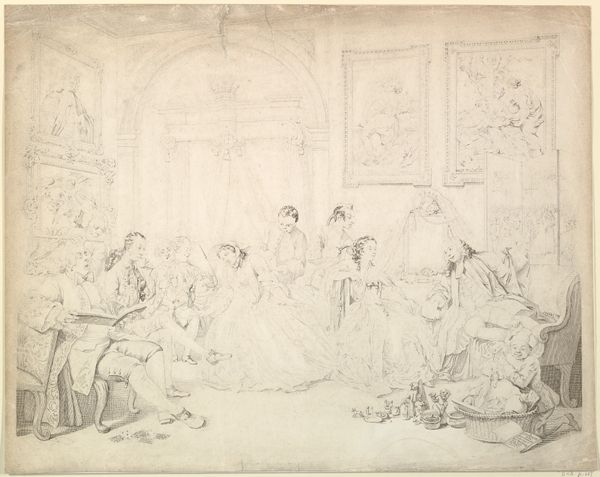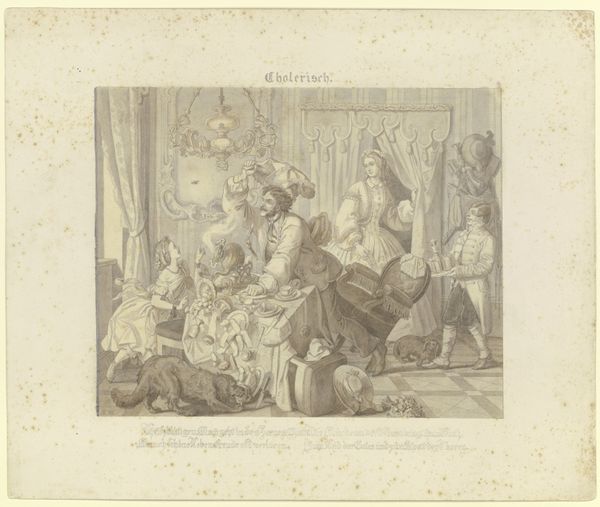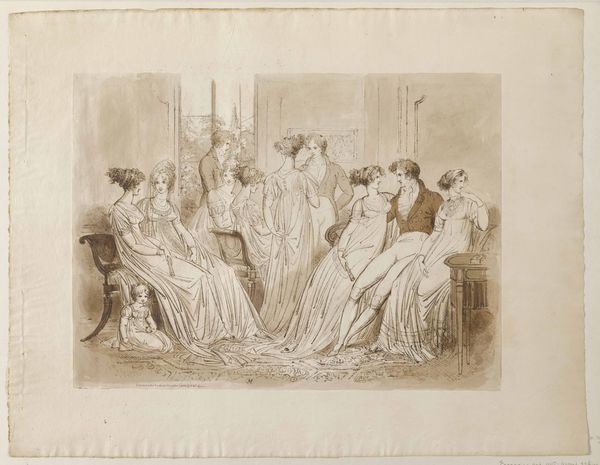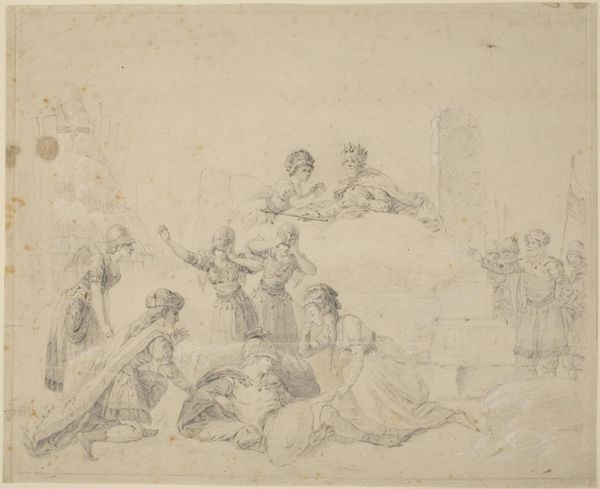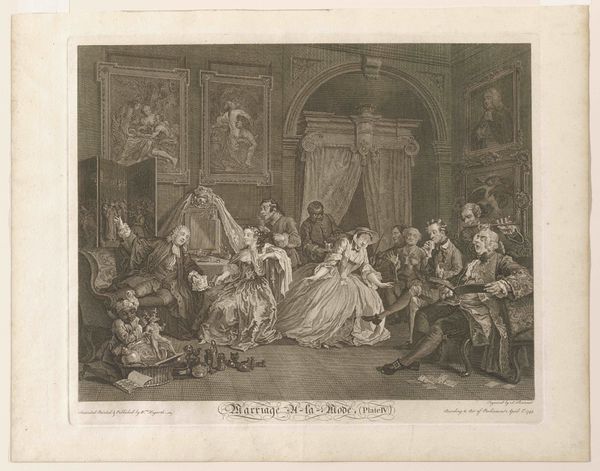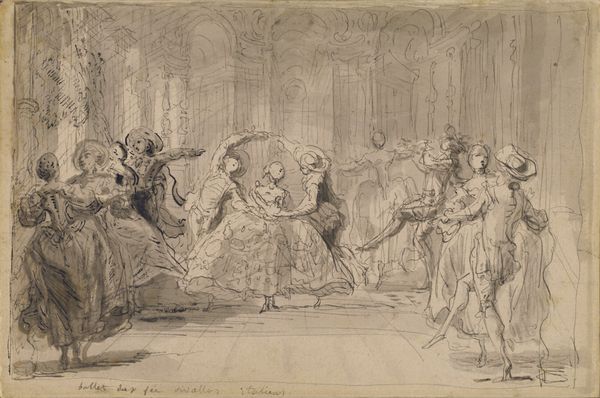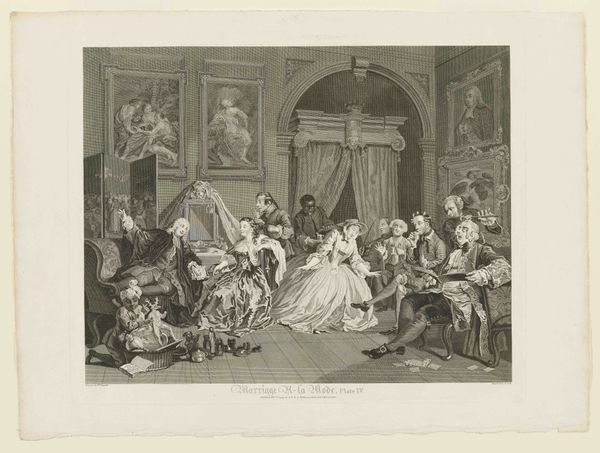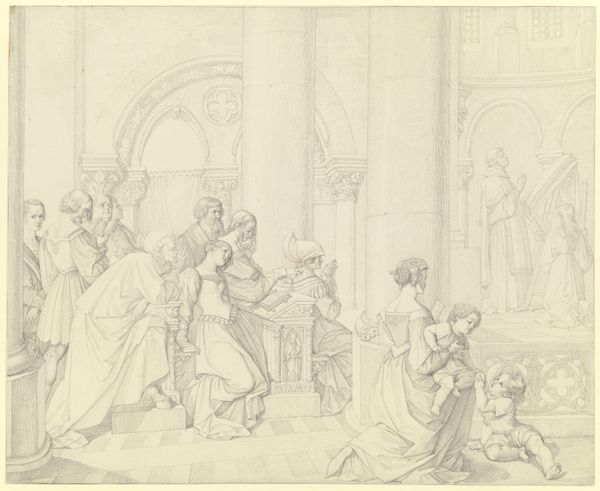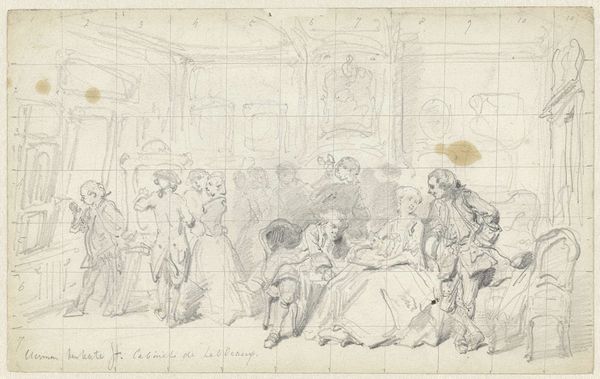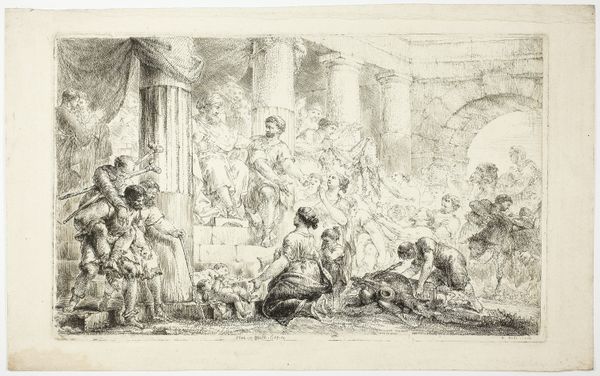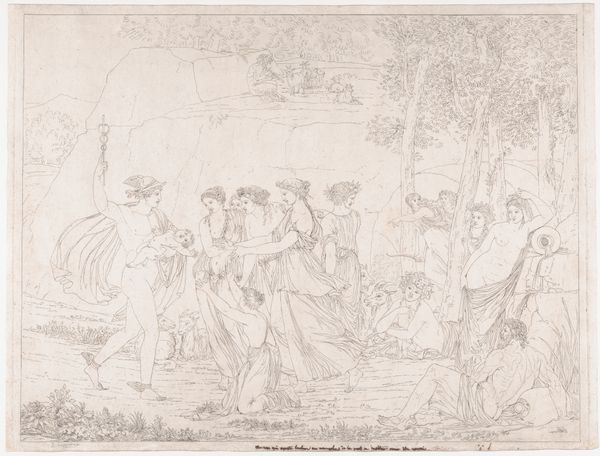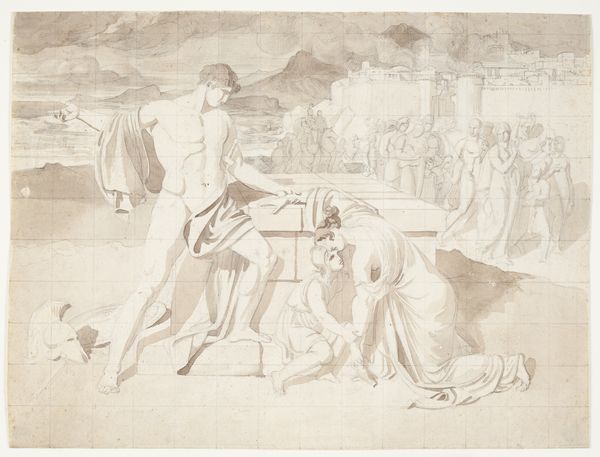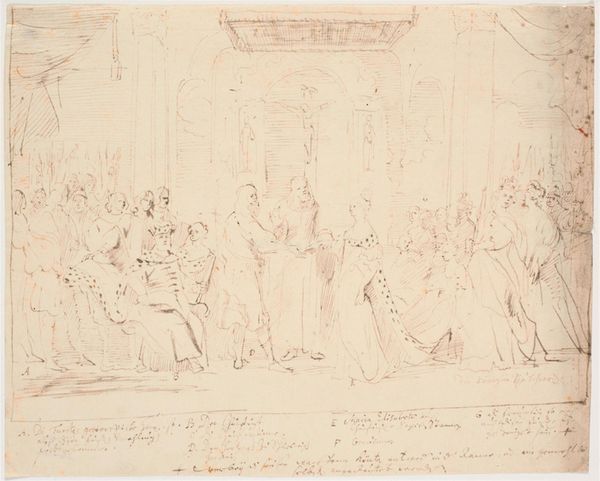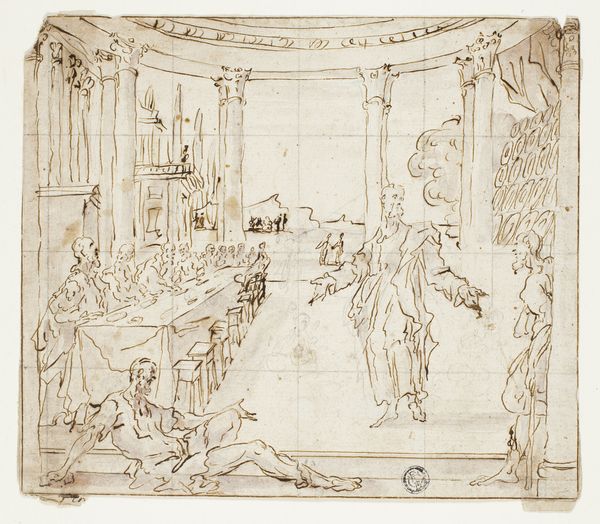
drawing, print, engraving
#
drawing
#
baroque
# print
#
england
#
line
#
genre-painting
#
history-painting
#
engraving
Copyright: Public Domain
Curator: Welcome. Before us is "Plate IV," an engraving dating back to 1745, by the English artist William Hogarth, housed here at the Minneapolis Institute of Art. Editor: My immediate sense is that the composition feels very elaborate and performative, wouldn't you agree? Even with the muted grayscale of the engraving, there's an undeniable emphasis on displaying wealth and social standing. Curator: Precisely. Hogarth was masterful at critiquing societal norms, and this piece certainly fits that mold. Looking at the scene itself, we see what appears to be a post-wedding reception for an arranged marriage. Editor: Oh, look at the child practically spilling out of that basket at the bottom. And all those overturned trinkets and finery tossed on the floor there as well. So much disregard for precious goods on display! I suppose they signify…something? Curator: Hogarth used details like these overturned trinkets, a broken mirror, and even a bored husband and wife, as visual clues—symbols that point to the moral decay beneath the surface of the upper class. This was very popular during this era in England. Satire became an art. Editor: It's clever how he exposes that discord, not through bold colors or lavish strokes, but through carefully etched lines, the very material reflecting societal structure—rigid yet prone to fracture under pressure. The materiality adds weight to Hogarth's message of moral decay, yes? Curator: Absolutely. The very act of printing and distributing these engravings gave him an incredible reach, making these critiques accessible to a wider audience, stirring debate about the ethics of marriage and class structure. Editor: A tangible object carrying weighty social commentary. The lines creating it replicate other engravings of similar sorts in different styles that reflect back on these themes. What makes this one stand out above all? Curator: The fact that so much context can be gleamed from such simple execution. Hogarth managed to hold a mirror to his era, inviting all classes to ponder society’s hypocrisies and values through his prints. He turned his artworks into a visual battleground of ideas, effectively creating art with a political mission, influencing artists that followed in similar paths. Editor: Thinking about how those engravings would be consumed as well really adds another level. The question is whether our audience ponders this sort of ethical problem after walking away today.
Comments
No comments
Be the first to comment and join the conversation on the ultimate creative platform.
